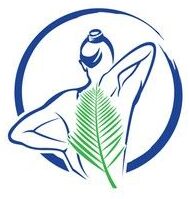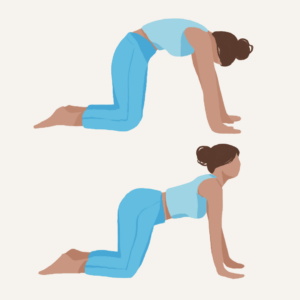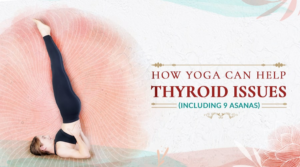According to the latest yoga statistics, the most common reason for starting yoga is to improve flexibility.
In this article, we’ve compiled research and expert opinions on the best poses to help you become more flexible, from simple stretches to more advanced poses.
No matter what level you are at, you’re sure to find asanas that can help you become more flexible.

1. Forward Bend Pose (Uttanasana)
Standing forward bend is at the top of the list.
Kripalu Yoga School Dean Cristie Newhart describes how alignment plays an important role in this pose and how to:
Support from the abdominal muscles below the navel allows for greater flexibility of the lumbar spine.[1]
Practicing folding is like a test to help you realize how agile you are at the moment!
The more times you do this, the more flexible you will eventually become, able to fully straighten your leg.
However, it is important to learn how to practice uttansana properly to avoid putting too much pressure on the lower back.
Pin this for later!
Don’t forget to pin these posts for later!

2. Chiṇbinh I (Virabhadrasana I)
It’s time to unleash the warrior within you.
This move helps to strengthen muscles and improve range of motion, perfect if you want to practice yoga for strength.
A project conducted in Detroit in 2016 compared yoga with stretching-strengthening exercises as a way to increase flexibility.[2]
A series of asanas were practiced over an eight-week period, including virabhadrasana I.
Results showed that this exercise was equally effective in improving overall fitness and flexibility.
Warrior I pose is also great for developing movement in the hips. It is believed that the flexibility of this pose will improve your range of motion over time.[3]
Watch the video below to learn how to do the pose correctly:

3. Cat Pose (Marjaryasana-Bitilasana)
Cat-Cow is another important move.
Many people call this a beginner’s asana because it helps lubricate the spine and abdomen and prepares you for more difficult poses![4]
Long-time yoga teacher Guru Rattana, PhD describes how:
Yogis believe that a person’s age is determined by the flexibility of his or her spine.[5]
She recommends starting with one to three minutes of practice, then gradually increasing the speed as your back becomes more loose and flexible.

4. Cobra Pose (Bhujangasana)
When it comes to simple exercise poses, cobra pose is a great one as it offers a lot of benefits to your overall health.
You will receive a deep stretch in your back, which will help strengthen and loosen your spine.
If you are someone who tends to hunch over, this can also be a way to enjoy the benefits of good posture.
Some yogis even claim it can help you get a “firm butt”![6]

5. Standing Pose (Dhanurasana)
This is a great pose to add to your routine if you want to work your back muscles.
Gwen Lawrence, who runs the Power Yoga for Sports training program, attests that the program is perfect for athletes as part of their stretching routine.
She recounted as follows:
Bow pose increases flexibility in the entire back…opening up the lungs, spine, and hip flexors, which are often tight in athletes. This allows athletes to rotate and move the spine more with less stress.[7]
Spinal flexibility was the focus of research published in the Journal of Physical Therapy Science.
Hatha yoga is practiced by women over 50, including the bow pose. Regular practice has been shown to improve the flexibility of their backs.[8]

6. King Dancer Pose (Natarajasana)
The King Dancer dance can be very difficult to master.
But once you master this position, you will become more agile!
Natarajasana is a full body stretch and helps increase flexibility not only in the spine but also in the shoulders and hamstrings.
Improvements in posture can be seen by practicing this pose regularly, so it is ideal if you have to sit behind a desk all day.[9]
Watch below to see yogi Lauren Eckstrom guide you through the exercise:

7. Bridge Pose (Setu Bandha Sarvangasana)
Many fitness experts recommend adding bridge pose to your yoga practice, especially if you’re looking for a pose that helps relieve back pain.
International yoga teacher Adriene Mishler reaffirms that this pose is ideal if you want to increase the range of motion in your back. [10]
She emphasizes that this pose is a rejuvenating backbend for those who are less flexible, but is also good for experienced yoga practitioners who can take the stretch deeper.
However, if you find it too difficult, there are some supported versions you can try.

8. Sommerfuglestilling (Baddha Konasana)
The butterfly pose helps to relax the groin and hips, giving your body a comfortable stretch.
In his book The Complete Guide to Yin Yoga, passionate yogi Bernie Clark highlights the power of this asana.[11]
Clark describes how it can be effective in treating urinary problems and even claims that it makes childbirth easier.
A word of warning for people with back pain:
Butterfly pose can make your discomfort worse because it puts more pressure on your joints.[12]
Rolling up a towel or blanket and placing it under each thigh can provide a little extra support.

9. Seated Forward Bend Pose (Paschimottanasana)
You should practice paschimottanasana after every workout, especially if you have hamstring strain.
This exercise helps release the hamstrings, while also working the back and neck.
Renowned yoga teacher Beryl Bender Birch describes in her book Power Yoga: The Total Strength and Flexibility Workout that seated forward bends are extremely helpful in stretching the glutes and lower back to increase strength and mobility.
Paschimottanasana is also said to be a great mood enhancer, ideal if you are looking for an asana to cure depression and anxiety.

10. Supine Spinal Twist (Supta Matsyendrasana)
Practicing this pose offers great restorative benefits and is an ideal pose to restore balance to the body.
Influential expert Travis Eliot recommends in his book A Journey into Yin Yoga that you hold this pose for between two and four minutes to feel the full benefits.
Eliot explains that the spinal rotation while lying down frees the lower back, allowing for easier movement.









